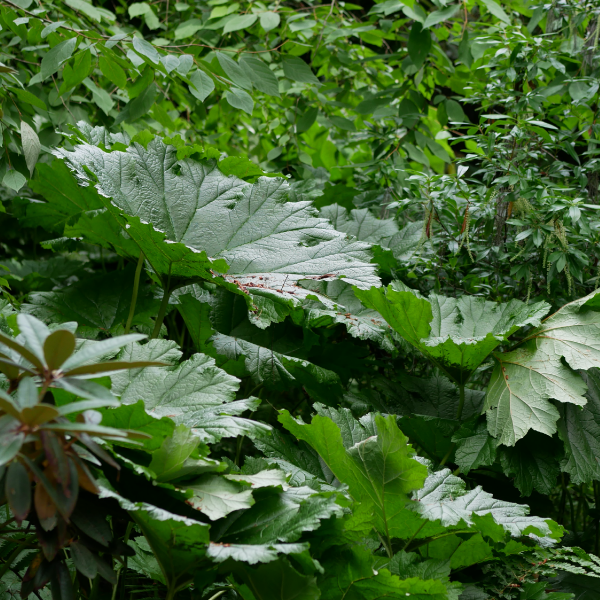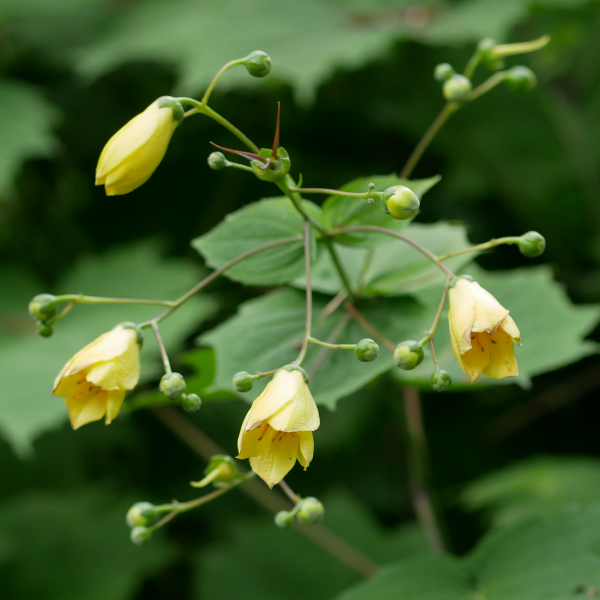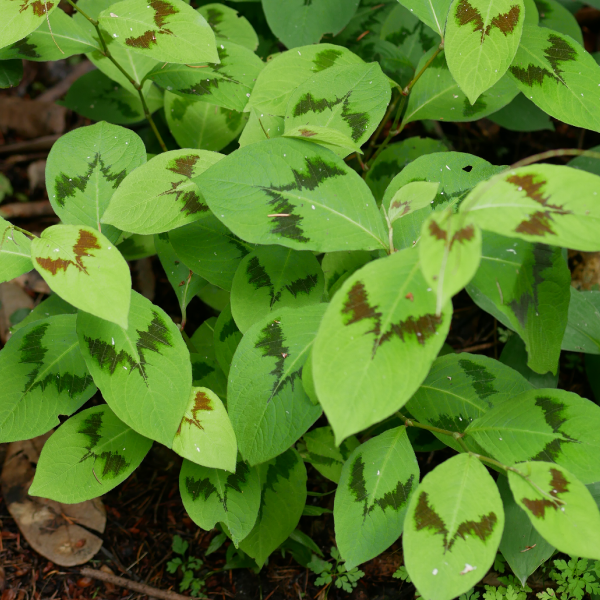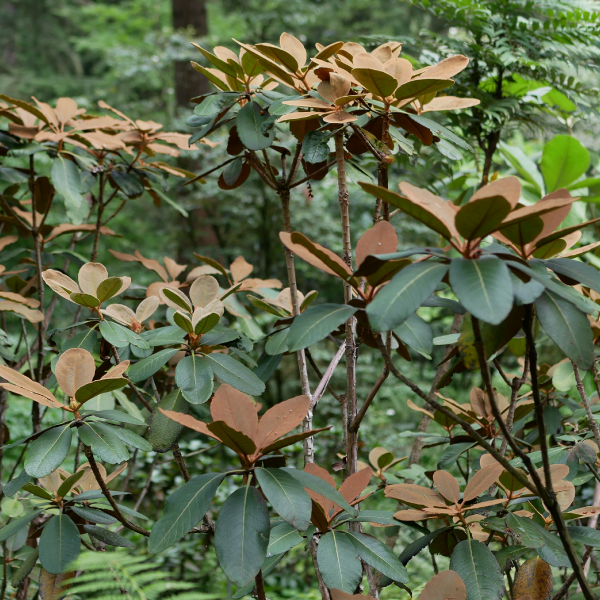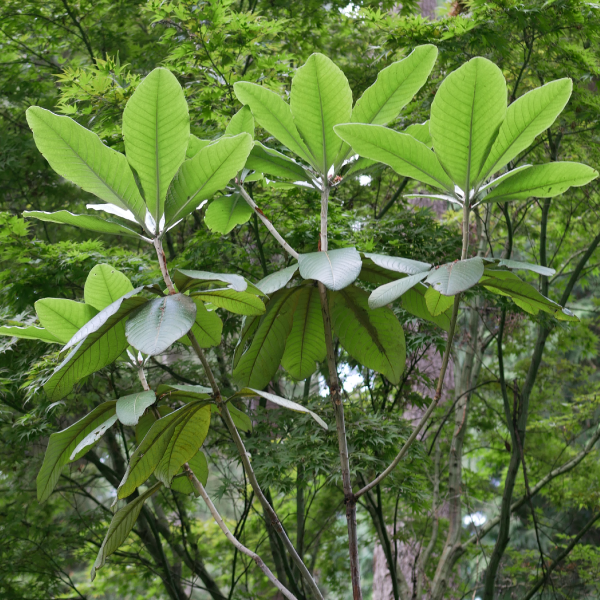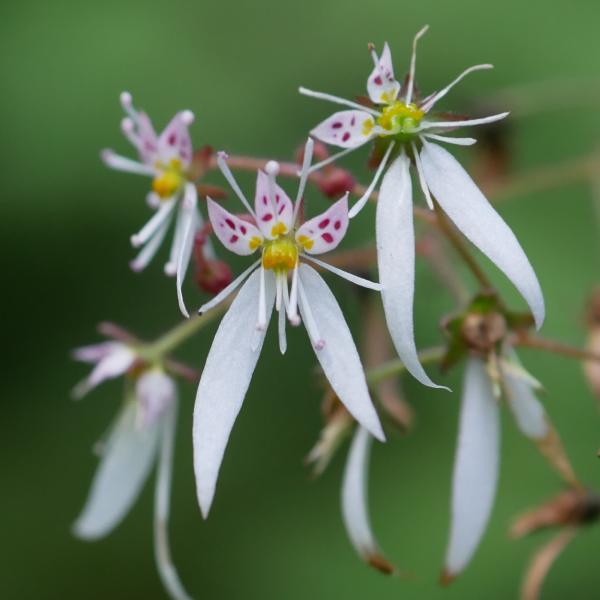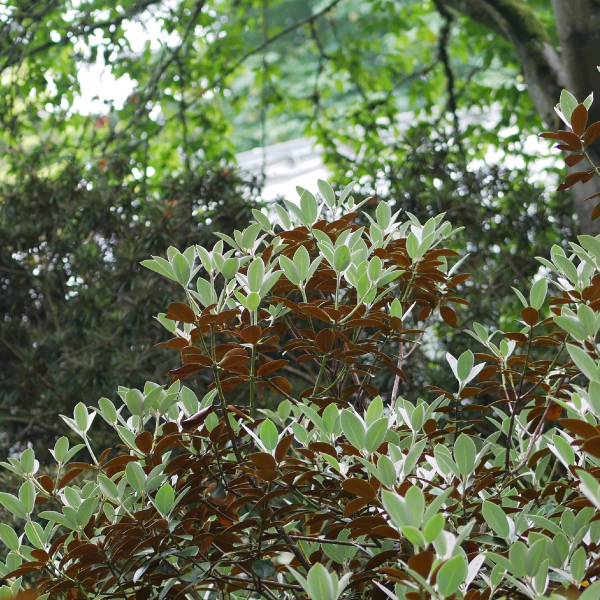Story and photos by RSBG Horticulturist & Assistant Curator, Will Clausen
Throughout August, new Rhododendron leaves continue to emerge and mature as the relentless summer sun does its best to sear the garden. As the heat builds through the end of summer, the new growth is quickly becoming thicker and more adaptable to both the immediate sun and heat, as well as the coming cold of December. This is certainly one of the least colorful times of year in our garden, but there is still something to be found for those who take the time to look. Walking through the garden in August, I prefer to beat the heat and enjoy a few of the shadiest spots.
Upper Woodland – From the bright glare of the Terrace and Rutheford Conservatory, follow a side trail to the left down through a grove of large leaf magnolias (Magnolia obovata and M. sargentiana var. robusta) to immediate shade. There is some interesting foliage in this area. The large glossy leaves of Clintonia andrewsiana, western bluebead lily, sit on the ground underneath a stand of juvenile Rhododendron sinogrande. Species from subsection Taliensia are abundant along this trail, including R. bureavioides with remarkable indumentum on the lower surface of the leaves. Along the north end of the Upper Woodland, you will find an area that we have recently replanted with a mix of Rhododendron species from subsection Fortunea. These plants, which tend to grow quickly and flower heavily, should give us a nice screen along the fence line and also work to draw visitors into the garden as they walk up the path from the parking lot. Across the trail, enjoy the foliage of R. wasonii, another member of subsection Taliensia. This species has my favorite combination of old and new growth. Moving back downhill, check out the spongey white mat of indumentum on the underside of R. principis leaves and enjoy some of the large leaf species like Rhododendron suoilenhense with its massive almost banana leaf-like foliage.
Lower Woodland – Walking down the first path from the main loop trail, you’ll encounter some interesting herbaceous plants. Persicaria virginica, jumpseed, is well established here and has a large maroon chevron marking on the leaves. Farther down you will see a mass of orange flowers from Cautleya spicata ‘Robusta’, one of the hardy gingers. These super tropical looking plants are great for late season flower color and have no trouble with our winters. Hydrangeas continue to bloom along the trails through the Lower Woodland, so take time to enjoy the vibrant colors on some of them. The Lower Woodland has suffered the loss of a few big native Doug-firs in recent years and as a result part of the section of the garden is actually quite sunny. It has been interesting to see how the rhododendrons have responded. While certain species and older individuals show little evidence of stress, others are consistently marked with leaf burn. Some of these patterns are actually quite attractive, but it’s not ideal and so we are planting fast-growing trees to give relief to the rhododendrons in this area. Unfortunately, all we can do is wait for the trees to grow and do our best to offer relief in the meantime.
Stumpery – The Stumpery is always a big winner when it comes to shade. A wall of Kirengeshoma palmata, a Hydrangea relative, spans the inner section of the stumpery. These late bloomers lend some yellow to their otherwise green surroundings. Look for berries on some of the Maianthemum and Polygonatum species among other genera dotted throughout the stumpery. Blues and greens are the most common colors here but look for red and even orange as well. Unfortunately, berries don’t usually last long between hungry critters and our own propagation pursuits. A stand of R. falconeri ssp. eximium appears as a swath of russet this time of year thanks to their beautiful new leaves which hold onto the tomentum on the upper surface of the leaf through the winter. A small wonder to search out are the Saxifraga stolonifera, strawberry saxifrage, that adorn some of the stumps. These are flowering in August with intricate white flowers atop their elaborately variegated leaves. Meanwhile, the massive shield-like leaves of Darmera peltata, umbrella plant, crowd the trail along the south end of the Stumpery.
- Darmera peltata
- Kirengeshoma palmata
- Persicaria virginiana
- Rhododendron falconeri ssp. eximium
- Rhododendron suoilenhense
- Saxifraga stolonifera
- Rhododendron wasonii

